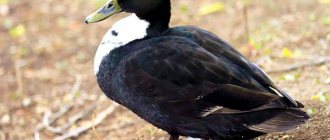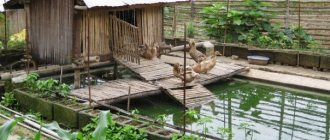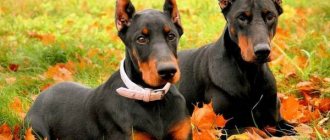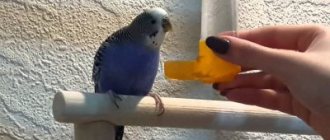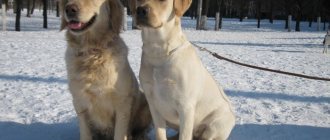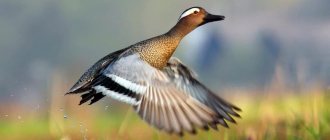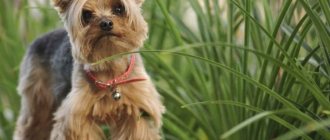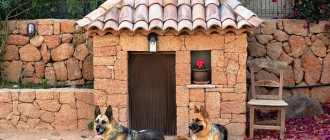In fact, apart from the color of the plumage of black ducks, there is little that unites them, since often such birds belong not only to different breeds, but also belong to different species. As economic animals, they are not very widespread and play a much less noticeable role in global meat production than their white relatives. However, we decided to introduce readers to the most interesting varieties of these waterfowl.
Dark plumage is characteristic of ducks of some domestic breeds and many wild species.
Distribution of the American black duck
American Black Duck (Anas rubripes)
The American Black Duck is native to southeastern Manitoba and Minnesota. The habitat extends east through the states of Wisconsin, Illinois, Ohio, Pennsylvania, Maryland, West Virginia, and Virginia. Includes the forested areas of Eastern Canada in Northern Quebec and Northern Labrador. This duck species winters in the southern portions of its range and as far south as the Gulf Coast, Florida, and Bermuda.
The American black duck prefers to live in ponds located among forests.
Habitats of the American black duck
The American black duck prefers to live in a variety of fresh and brackish water bodies located among forests. It settles in swamps with an acidic and alkaline environment, as well as in lakes, ponds and canals near fields. Distributed in bays and estuaries. It prefers food-favorable areas, which include brackish estuary bays with extensive adjacent agricultural lands.
Outside the breeding season, birds gather in large, open lagoons, on the sea coast, even in the open sea. American black ducks are a partially migratory species. Some birds remain year-round on the Great Lakes.
American black ducks are a partially migratory species.
During the winter, the northernmost populations of the American black duck move to lower latitudes on the Atlantic coast of North America and move as far south as Texas. Some individuals have been spotted in Puerto Rico, Korea and Western Europe, where some find permanent habitat for long periods of time.
What to feed
Ducks cannot be called picky animals in terms of food, but in order for the birds to be healthy and the meat tasty, you need to know what to feed them. The summer diet is slightly different from the winter one.
Adult ducks
When free-ranged in the summer, waterfowl obtain their own food and make their diet more varied, but they still need to be fed twice a day with grain mixtures (millet, oats, barley).
But in winter, so that birds do not suffer from vitamin deficiency, vitamins and minerals must be added to the feed.
Their regular diet should include the following products:
- cereals, preferably several types (barley, wheat, corn, etc.), provide from 40 to 50% of the total feed weight;
- crushed legumes (soybeans or peas) in an amount of about 10% are added to the mash;
- vegetables and herbs are mixed into the feed at about 10–15% of the total mass;
- fish and bone meal, egg shells or crushed shells are mixed into the feed in an amount of 5–10% of the total feed volume;
- powdered milk and technical fat are added in small quantities to wet food;
- vitamin complexes (given according to instructions).
Find out what to properly feed adult ducks and ducklings.
Ducklings
Hatched chicks have their own special diet:
- in the first days, the young animals are fed finely chopped boiled eggs;
- after a couple of days, cottage cheese and oatmeal, corn or barley porridge are added;
- on day 5 – chopped greens;
- on day 10, half of the grain feed can be replaced with boiled potatoes.
Important! Ducks quickly gain weight and become fat. To obtain tender and dietary meat, they should not be overfed.
A couple of weeks before slaughter, the diet should be dominated by protein foods, and in the last 5-7 days, cereals and boiled potatoes, which are rich in carbohydrates.
Dry food is filled with boiled water or boiled. Porridges should be crumbly, not viscous, so as not to cause sticking of the nasal openings of young animals. Many poultry farmers accustom their chicks to wet feed from the first days of life.
In the first days, ducklings should eat frequently, every 2–3 hours. Chicks should always have clean and fresh water.
Important! At one week of age, ducklings are given fine gravel (up to 3 mm in diameter), which facilitates the digestion of food.
The popularity of the black white-breasted duck is explained by its many advantages:
- females are considered good layers with developed maternal instinct;
- ducklings grow quickly and gain weight;
- tasty meat has dietary indicators;
- the breed is unpretentious in maintenance;
- birds have a calm character;
- feathers are used for pillows.
To summarize, we can say that the black white-breasted bird will be an excellent choice for both beginners and experienced poultry farmers.
External signs of the American black duck
American Black Ducks in Flight
A male American Black Duck in breeding plumage has areas of the head heavily streaked with black, especially along the eyes, and on the crown of the head. The upperparts, including the tail and wings, are blackish-brown in color.
The feathers below are dark, black-brown in color with pale reddish edges and areas. The secondary flight feathers have an iridescent bluish-violet "mirror" with a black border and a narrow white tip. The tertiary flight feathers are glossy black, but the rest of the plumage is dark gray or blackish-brown, and silvery-white underneath.
The iris of the eye is brown.
The beak is greenish-yellow or bright yellow, with black nails. Legs are orange-red. The female has a greenish or olive bill with small black spots. Legs and paws are brown-olive in color.
The coloration of the plumage of young birds resembles the plumage of adults
The plumage color of young birds resembles that of adults, but is distinguished by numerous, longitudinal mottled spots on the chest and underside of the body. The feathers have wide edges, but are darker than the tips. In flight, the American black duck resembles a mallard. But it looks darker, almost black; the wings, which are different from the rest of the plumage, especially stand out.
Breeding in American black ducks begins in March-April.
Mallard hunting
The wild duck has long been an object of hunting. The most common season is summer-autumn hunting with dogs of various breeds. They search the thickets, raise the ducks on the wing, give a voice - they warn the owner that they are ready to shoot. After shooting with buckshot and knocking down the game, the dog finds the bird and brings it to its owner.
There are various ways to hunt without using dogs. One of them is using duck profiles along with a decoy. A stuffed mallard is planted on the water, and the cry of a decoy duck raises the birds nearby to take wing. decoy helps to attract birds if the decoy becomes silent.
Flying hunting is carried out in the fall, until early November. They build special huts, place scarecrows, and shoot from ambush. The history of the mallard goes back several thousand years. The high adaptability of birds has made it possible to continue to encounter wild ducks in the wild to this day.
Breeding American Black Duck
Breeding in American black ducks begins in March-April. Birds usually return to their previous nesting sites, and very often use old nesting structures or build a new nest 100 meters from the old structure. The nest is located on the ground and hidden among vegetation, sometimes in a cavity or crack between stones.
There are 6-10 greenish-yellow eggs in the clutch.
They lay in the nest at intervals of one per day. Young females lay fewer eggs. During the incubation period, the male stays close to the nest for about 2 weeks. But its participation in the breeding of offspring has not been established. Incubation lasts about 27 days. Quite often, eggs and chicks become prey to crows and raccoons. The first broods appear in early May, and peak hatching occurs in early June. Ducklings are able to follow the duck within 1-3 hours. The female leads her offspring for 6-7 weeks.
Outside the breeding season, American black ducks are very sociable birds.
How are they kept?
Enough space is required to keep birds. There should be no more than 3 birds per 1 m2 of poultry house. The floor in the duck's home is made of wood, straw or sawdust is used as bedding, laid in a layer of 20 cm, and changed regularly. The optimal summer temperature in the poultry house is 16-18 °C, winter – 14-16 °C. Air humidity – 60-70%.
The birds are fed according to a schedule, at the same time every day. A standard duck diet consists of:
- grains;
- bran;
- garden herbs, vegetables;
- algae;
- bone and fish meal;
- chopped fish;
- sources of minerals - chalk, shell rock, eggshells;
- vitamin supplements.
A fenced walking area must be organized near the poultry house. If there is no natural body of water nearby, then a large basin of water is placed in the pen. At night, the birds are locked in the poultry house.
Features of the behavior of the American black duck
Outside the breeding season, American black ducks are very sociable birds. In autumn and spring they form flocks of a thousand or more birds. However, at the end of September, pairs form, the flock thins out and gradually decreases. Pairs are formed only during the breeding season and last for several months. The peak of abusive relationships occurs in the middle of winter, and in April almost all females will have formed relationships in a pair.
Birds feed in shallow water, constantly exploring the muddy bottom with their beaks
Nutrition
Mallards feed on the shallow coast, where the depth is 30-35 cm. The duck not only lowers its neck into the water, but often turns vertically in search of food, trying to reach plants at the bottom of the reservoir. The mallard in the photo is often captured during feeding in exactly this position - with its tail up.
The duck consumes food by filtering - straining out animal and plant feed:
- hornwort;
- duckweed;
- tadpoles;
- small fish;
- crustaceans;
- insects;
- mosquito larvae;
- shellfish;
- frogs;
- tadpoles.
By autumn, there is more plant food in the ducks’ diet—the tubers and fruits of the plants grow. Wild ducks actively feed at night in agricultural fields, where birds pick up grains of oats, rye, wheat, and rice. In the morning, the birds return to the reservoirs. In early spring, wild ducks feed exclusively on aquatic plants.
Conservation status of the American black duck
The number of American black ducks in the 1950s was about 2 million individuals, but since then the number of birds has been steadily declining. Currently, there are about 50,000 in the wild. The reasons for the decline in numbers are unknown, but this process is likely due to habitat loss, deteriorating water and food quality, intensive hunting, competition with other duck species and hybridization with mallards.
The appearance of hybrid individuals creates certain problems for the reproduction of the species and leads to a decrease in the number of American black ducks.
Hybrid females are not characterized by very high viability, which ultimately affects the breeding of offspring. Hybrids are difficult to distinguish from non-hybrid birds, in addition, as studies have shown, female hybrids often die before they have time to give birth. This can be clearly seen in the case of interspecific crossing from an American black duck with a mallard.
American black duck numbers are steadily declining
As a result of natural selection, numerous mallard ducks have developed stable adaptive characteristics to environmental conditions. Therefore, the few populations of American mallards are experiencing additional genetic pressure. Currently, it is important to avoid mistakes when determining species identity.
If you find an error, please select a piece of text and press Ctrl+Enter.
Domestic breeds: brief descriptions with photos
There are not many domestic ducks with black plumage; they differ greatly both in external parameters and in economic characteristics. This bird is not popular among owners of large farms and breeding farms, mainly because the carcasses of brightly colored ducks are difficult to pluck “down to clean skin,” and their down and feathers are not in demand by light industry enterprises. Owners of small farms, on the contrary, are very interested in these beauties and are ready to make great efforts to place them in their farmsteads.
“Bashkir Colored” One of the two officially registered varieties of the breed, bred at the end of the 20th century in Bashkortostan, has black plumage. Poultry is characterized by excellent indicators of early maturity, feed conversion, productivity, as well as the quality of meat and egg products. “Bashkirs” are unpretentious, undemanding in terms of keeping and feeding conditions, and breed well “in themselves.”
“Bashkir colored” ducks are suitable for any farm, including the farmsteads of beginning poultry farmers
“Indian Runner” The jet black color of the plumage is one of the officially standardized varieties. At home (in the countries of Southeast Asia), the breed is widespread as a pure egg breed. Females are capable of producing, on average, 200 eggs per year . The products are of the highest quality and are an indispensable component of many national cuisine recipes. The meat of “runners” is devoid of a specific taste and is considered a delicacy. In our country, these birds are often kept as ornamental birds due to their very cute appearance and interesting behavioral features. According to reviews from owners, such pets do not cause any particular problems; raising them in private farms is not difficult.
"Indian runners" are a versatile poultry known since ancient times.
"Cayuga" A meat-egging breed obtained by American breeders as a result of crossing black ducks with local domestic ducks. Developed in New York State at the beginning of the 19th century, but the official name, derived from Lake Cayuga, was patented only in 1874. The body weight of adult males reaches 4.5 kg; females are usually smaller - around 3 kg. The body is horizontal, oblong. The tail is medium, sticking up. The neck is shortened, the head is small, with a steep, convex forehead. The beak of females is bluish-black, while that of males is dark olive. Paws are black, eyes are brown. The breed is distinguished by good health, unpretentiousness, resistance to cold and a fairly calm disposition.
The bird has a very impressive appearance: its completely black plumage is emerald green or bluish in color and has a bright “metallic” sheen.
In a year, the duck lays about 150 eggs, and in the first ten the shell is almost black, and in subsequent ones it gradually lightens, acquiring a grayish-white or light greenish tint. The incubation material is characterized by high rates of fertilization and hatchability. Females are excellent hens: almost all of them sit on nests every year. Ducklings have high immunity and are little susceptible to disease. Slaughter weight is gained by the age of 2-2.5 months ; 2-3 weeks before slaughter, young animals require intensive fattening. Cayuga meat is considered dietary, but most owners note that it is quite difficult to obtain a “clean” carcass from a bird of this breed, since plucking almost always leaves unsightly “stumps” on the skin. Nevertheless, many summer residents and rural residents are happy to keep “kayug” in their backyards. This is facilitated by the high decorativeness of the bird and the opportunity to receive additional income from the sale of hatching eggs and day-old young animals.
“Muscovy” (“Indoutka”) A type of “wood” duck, domesticated by South American Indians and spread throughout the world after the discovery of the continent by European colonialists. Black plumage comes in two varieties. Despite the relatively slow rate of weight gain, “musks” are extremely popular among owners of private farmsteads. The attractive qualities of the species are considered to be a calm character, unpretentiousness, excellent consumer qualities of meat and eggs, and ease of home maintenance and breeding. It is also important that “indo-ducks” freely mate with representatives of many domestic breeds, and the resulting hybrids (“mulards”) have pronounced “broiler” characteristics.
The bird is large - adult males reach a weight of 6 kg
“Black White-Breasted” (Ukrainian) Meat breed. Obtained in the middle of the 20th century by employees of the Institute of Poultry Science of the Ukrainian Academy of Agrarian Sciences. The bird is quite large: adult males weigh 3.5-4 kg, females - 3-3.5 kg. The plumage color is black, the front of the neck and chest are white. The age of puberty occurs at 6 months. In a year, a laying hen can produce about 150 (maximum up to 210) eggs weighing about 90 g. The breed is considered precocious. It cannot compete with the best broiler crosses, but two-month-old ducklings have a slaughter weight of about 2 kg and produce meat of medium fat content , which has excellent consumer properties. Females have a developed maternal instinct. Economic qualities are completely inherited, so the breed is easy to breed on its own. The fertilization rate of eggs reaches 94%, hatchability during natural incubation is about 70-75%. The chicks are born strong, have high immunity, and almost never get sick. Ducks are unpretentious and do not require special selection of feed or complex care.
The breed is excellent for keeping on homesteads and farmsteads
